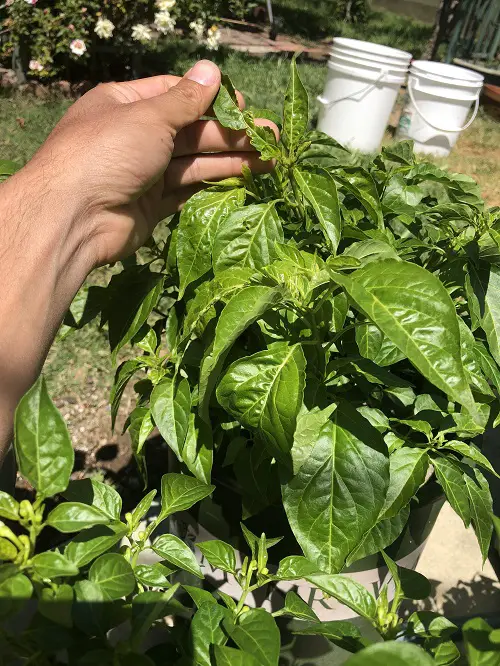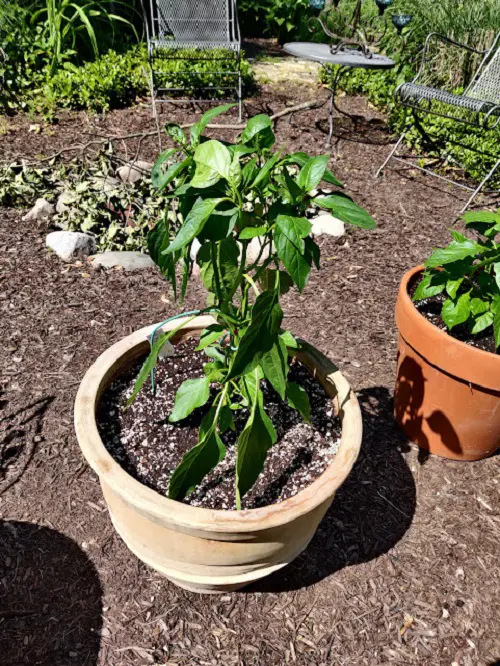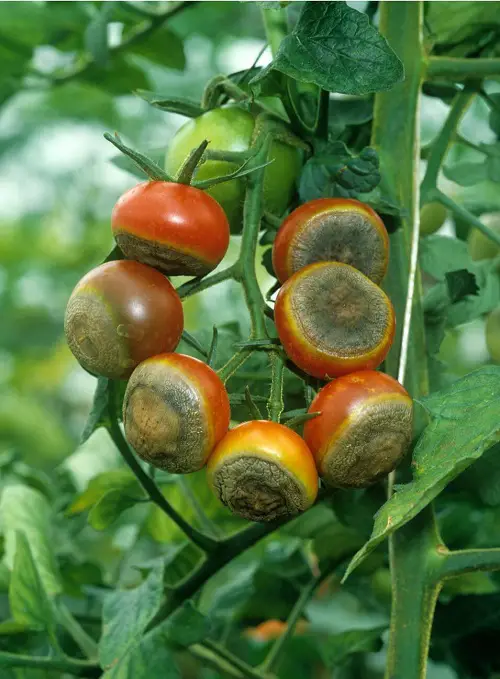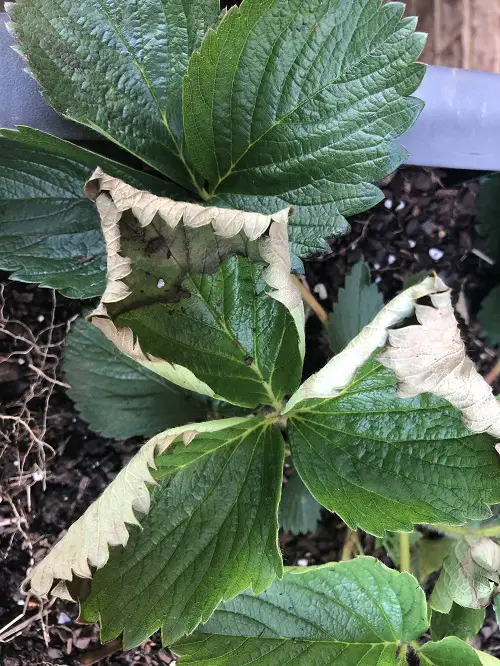If your plants are not growing well, look for these Signs that Your Plants Need Calcium and learn how to fix them!
Humans, animals, and plants–we all need calcium for healthy growth. There are tell-tale signs that pinpoint the lack of this essential mineral. It could be a deficit in the soil or the plant’s inability to absorb calcium, both leading to a series of physical malfunctions. Whatever it is, it’s very important to identify and recognize the signs that your plants need calcium and that’s what is shared below!
Why do Plants need Calcium?
Plants need this mineral in the form of calcium pectate to build cell walls that keep them sturdy, upright, and disease-free.
New tissue, such as root tips, fresh shoots, and young leaves, all need calcium to develop correctly. Healthy cell walls help them gain their shape and create barriers against pathogens.
Calcium is also crucial in soil structure to maintain pH levels. This helps roots grow better and secures healthy, tasty fruits and vegetables.
What Causes Calcium Deficiency in Plants?
It is not as simple for plants as drinking a glass of milk! Through transpiration, roots absorb and carry calcium from the soil to their shoots and other growing parts.
Plants need sufficient water to transpire or absorb nutrients from their stems to other parts, such as leaves, flowers, etc. Imbalanced and irregular watering can hinder these nutrients from reaching all their growing parts.
The soil could also be extra acidic or have an overload of nutrients that deters the plant from accessing usable calcium. This mineral needs enough wiggle room to merge with the cell membrane.
If other essential nutrients do not provide this space, the plant’s cell walls weaken, and it cannot absorb calcium even if it is available.
Plants then find ways to tell you they are suffering from calcium deficiency. Let’s take a look at those ways and signs.
Signs that Show Your Plants Need Calcium
1. Deformed New Growth

Younger leaves and blossoms are the first to display the effects of calcium deficit in plants. They are slow to grow, irregularly shaped, and prone to brown chlorotic spots along their leafy margins that later spread to the center, eventually killing the leaf.
A calcium shortage can also affect the plant’s root tips. They’ll stop developing properly and hinder the plant’s ability to take up water and other essential nutrients, worsening its health.
2. Curling Leaves
Due to a lack of calcium, the structure and integrity of a plant’s leaf begin to collapse. The leaves start curling into a spiral, often termed “parachute leaves” due to their similar arching form.
You’ll notice that the buds start twisting, and the leaf margins curl downward or upward. With time, these signs will be more prominent. Eventually, the tips and margins will also stop growing, and your plant’s foliage will appear stubby, thicker, and sometimes even greener than usual.
These symptoms don’t always occur on the lower stalks but are evident on older leaves.
3. Stunted or Irregular Growth

Since calcium is vital for plant growth, a lack of nutrients will lead to much slower or stunted growth, and in severe cases, the plant will stop growing entirely.
But that’s not all! The plant cannot support itself with weak cell walls and may bend or start flopping over.
4. Blossom End Rot
A black and caving spot on fruits and flowers could indicate calcium deficiency. It usually occurs in plants like tomatoes, where a dark, wrinkly crater forms at the bottom end of the fruit, known as blossom end rot.
This condition is a telltale sign that your plants need calcium. It’s not just on tomatoes; you’ll also see it on peppers, eggplants, and other developing fruits and vegetables.
The blossom is the bit of the fruit where the flower is attached to the plant. With a calcium shortage, this end doesn’t develop properly and forms sunken, water-soaked lesions—often white or yellow.
The fruit will turn brown, black, and even leathery and cracked as the rot progresses. This happens again because the fruit’s tissue weakens and collapses without calcium in cell walls.
5. Discoloration

Sometimes, the edges of leaves turn a dark brown, also known as tip burn. This, and other signs like the yellowing of the entire leaf due to chlorosis, are clear indications of calcium deficiency.
This symptom also occurs with chemical burns and other nutrient deficiencies, so look out for other signs to identify the culprit as calcium deficit.
How to Fix Calcium Deficiency in Plants
The most effective solution for fixing calcium deficiency in plants involves two remedies: providing calcium directly to the plant and creating conditions that favor calcium uptake.
The first way is to spray a calcium chloride or calcium nitrate solution directly on the leaves. Why the leaves? If you bypass the soil, the response will be quicker, especially for new growth. Just follow the instructions on the package, and check the soil pH before anything.
If the soil is acidic (less than 6.5), apply agricultural lime (calcium carbonate) for a slow-release source of calcium. Mixing 1-2 tablespoons into the soil around the base of the affected plant once in two months should suffice.
The second way involves watering rituals. Maintain consistent moisture, and don’t let the soil dry out between waterings, as this could lead to poor calcium uptake. Also, use alkaline water.
Excessive ammonium and too much acidity upset calcium in the soil. So ensure your fertilizers have the right balance of nutrients, and perhaps go for a supplement rich in calcium and magnesium. Eggshell tea, bone meal, and wood ash are also excellent sources of calcium and other essential nutrients.
Do let us know via comments below if this article helped you tackle the calcium deficiency in your plants!




